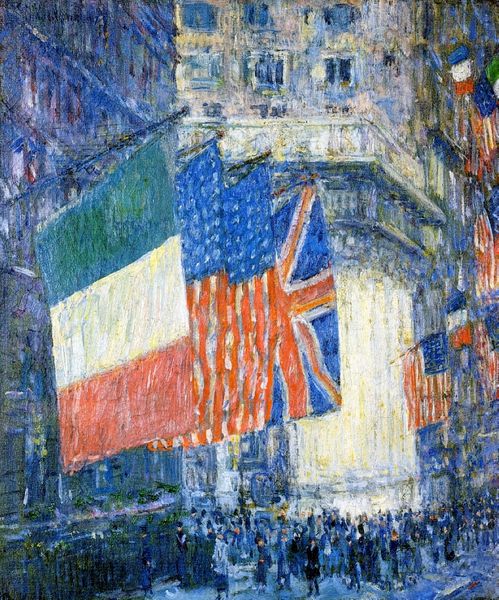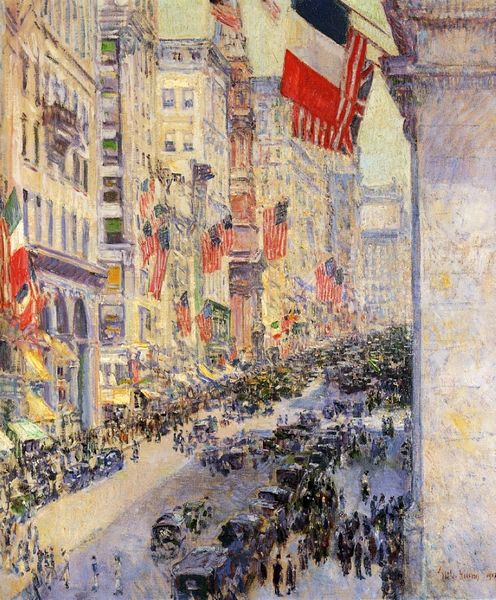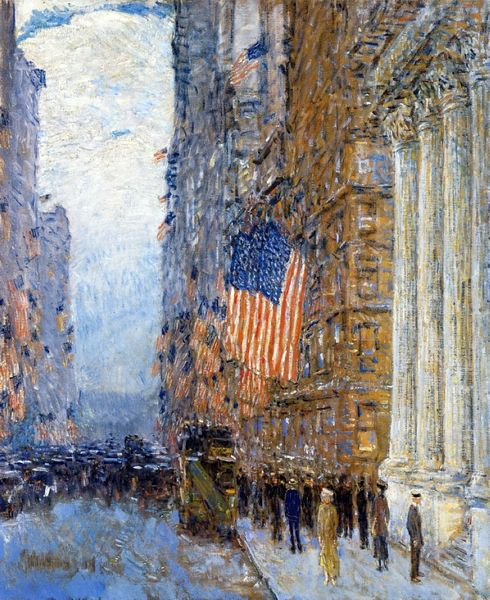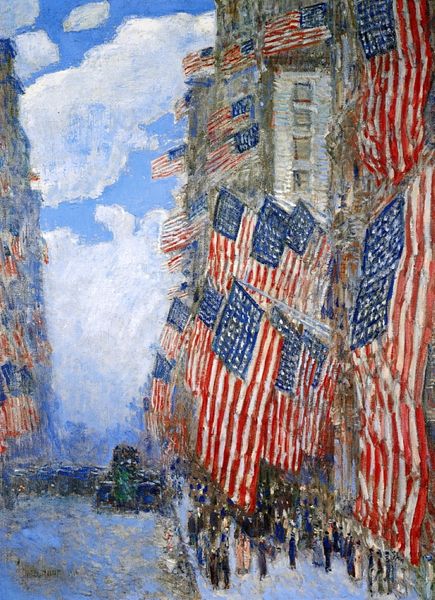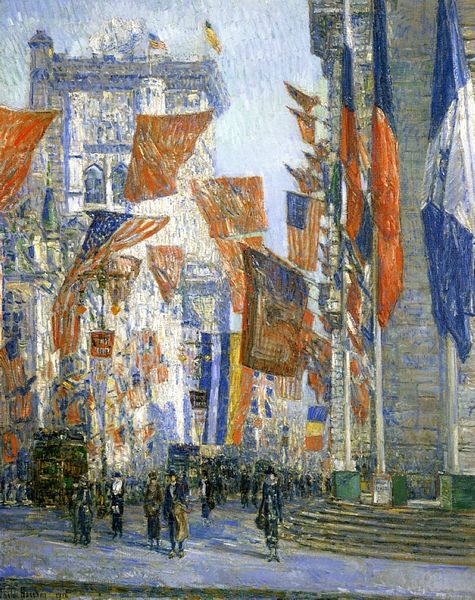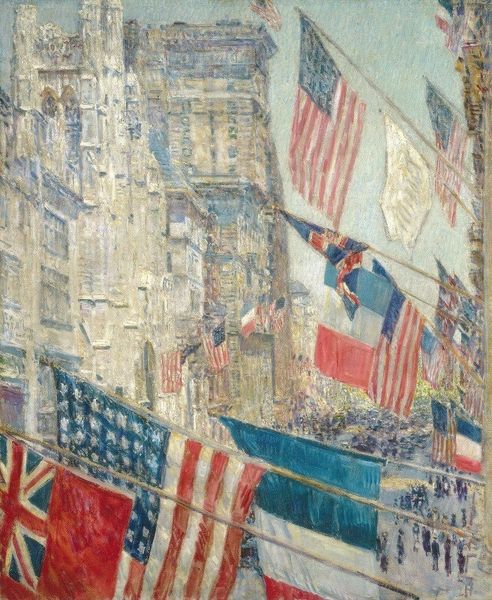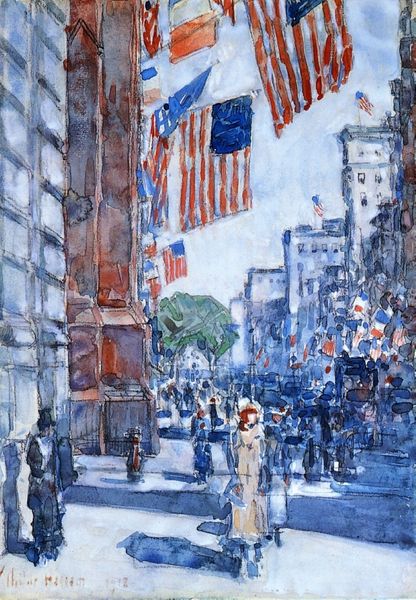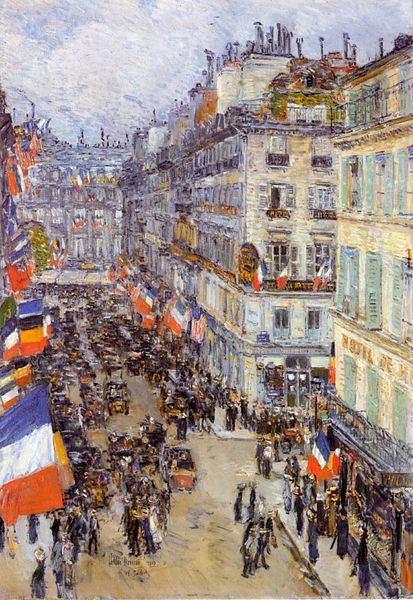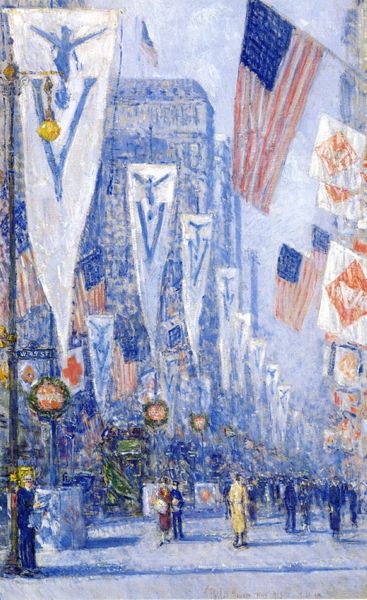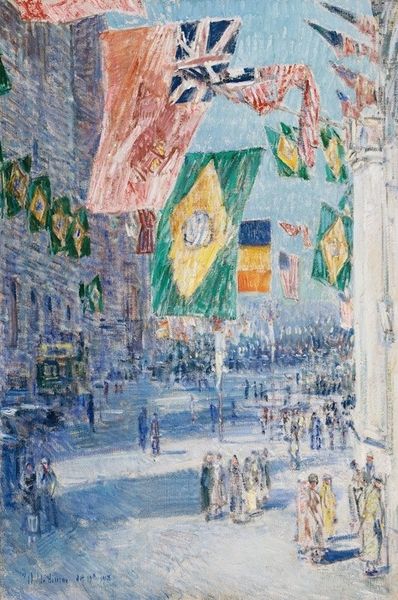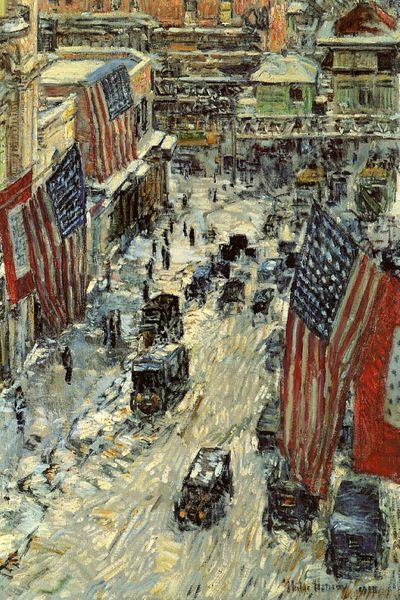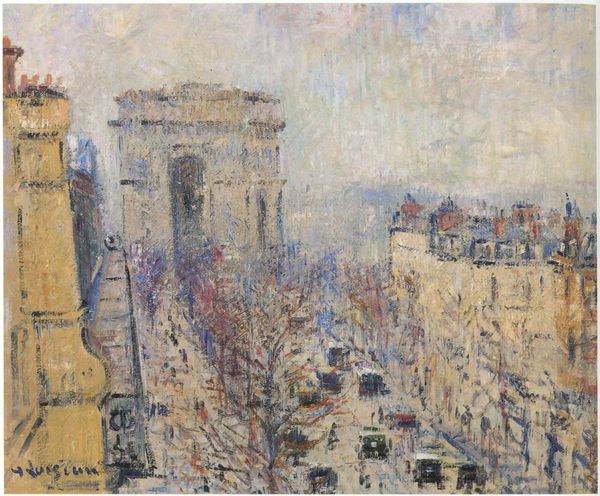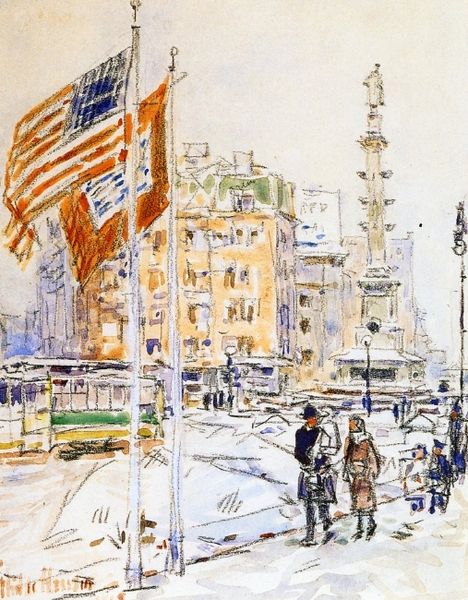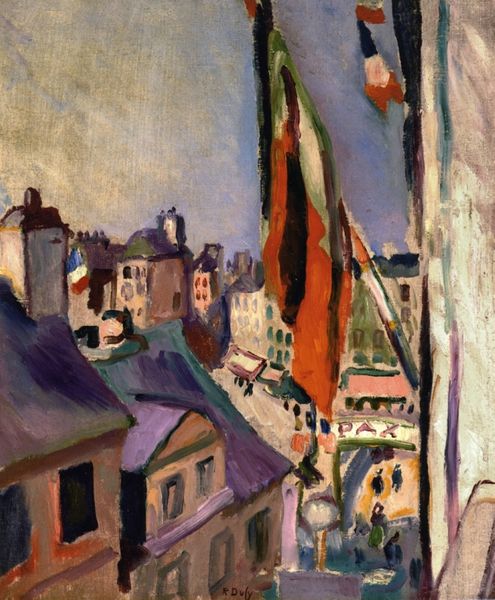
Copyright: Public domain
Editor: Childe Hassam's "The New York Bouquet, West Forty-Second Street," created in 1917 using oil paint, is incredibly captivating. The flags almost vibrate against the backdrop of the hazy city. What do you see in this piece beyond its Impressionistic style? Curator: I see a snapshot of material patriotism, strategically constructed for consumption. The flags, almost aggressively present, weren't merely aesthetic choices. They were manufactured objects, mass-produced symbols intertwined with the social and economic currents of wartime. Consider the labor involved in their production, the textiles sourced, the societal pressures they represent. Editor: That’s a different angle than I considered. I was mostly focused on the… the visual… the… pretty picture. Curator: Think about the paint itself, too. Oil paint becoming increasingly industrialized by 1917, produced in factories rather than hand-ground. Hassam's choice of medium, his technique even, reveals an engagement with modern industrial processes that subtly reflects the changing means of artistic production. The visible brushstrokes hint at the human labor, yes, but they’re applying a commercially available product. Editor: So you're saying even his technique is tied to the manufacturing capabilities of the time? The subject and material of painting relate back to manufacturing and economics? Curator: Exactly. The cityscape itself is a product of labor, material, investment. Those buildings, the streetcars, even the people depicted represent massive coordinated economic forces. Hassam’s "Bouquet" isn't just a pretty picture; it’s a window into the complex relationships between art, labor, and material culture in early 20th-century America. Editor: That makes so much more sense now. Thanks! I’ll definitely look at art with a different, more material-conscious, eye now. Curator: Indeed. Seeing the artwork not just as image, but also as product, allows a deeper, more contextual, understanding.
Comments
No comments
Be the first to comment and join the conversation on the ultimate creative platform.
